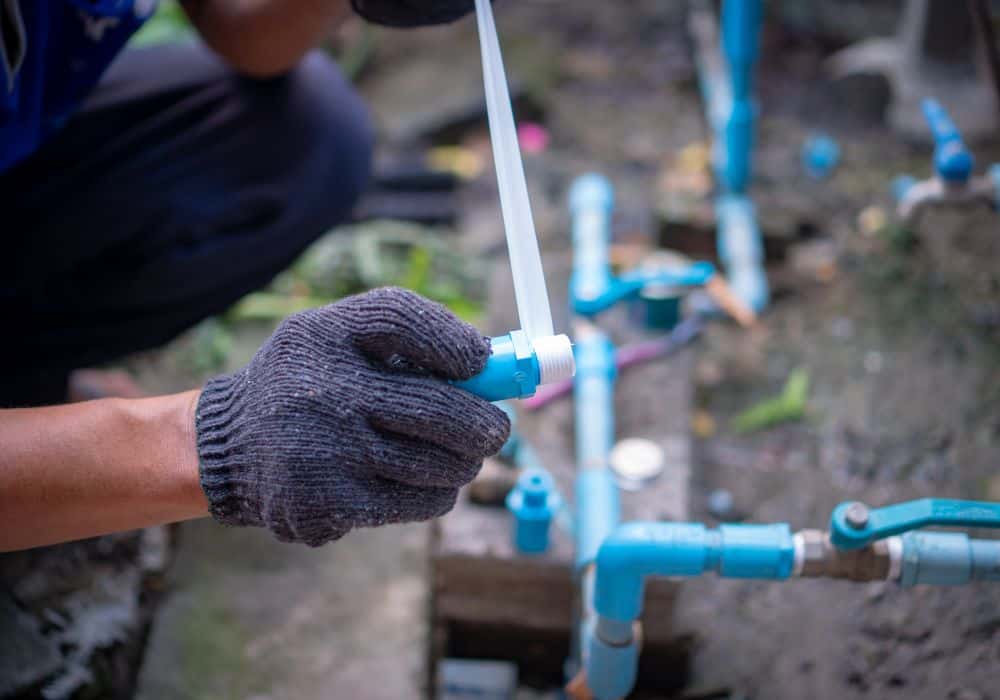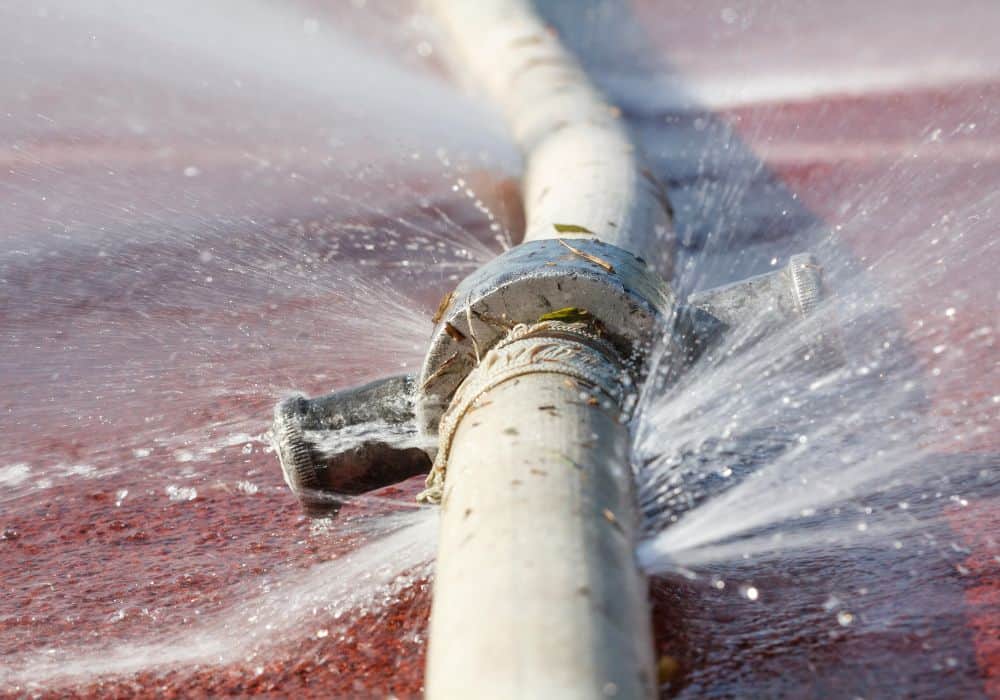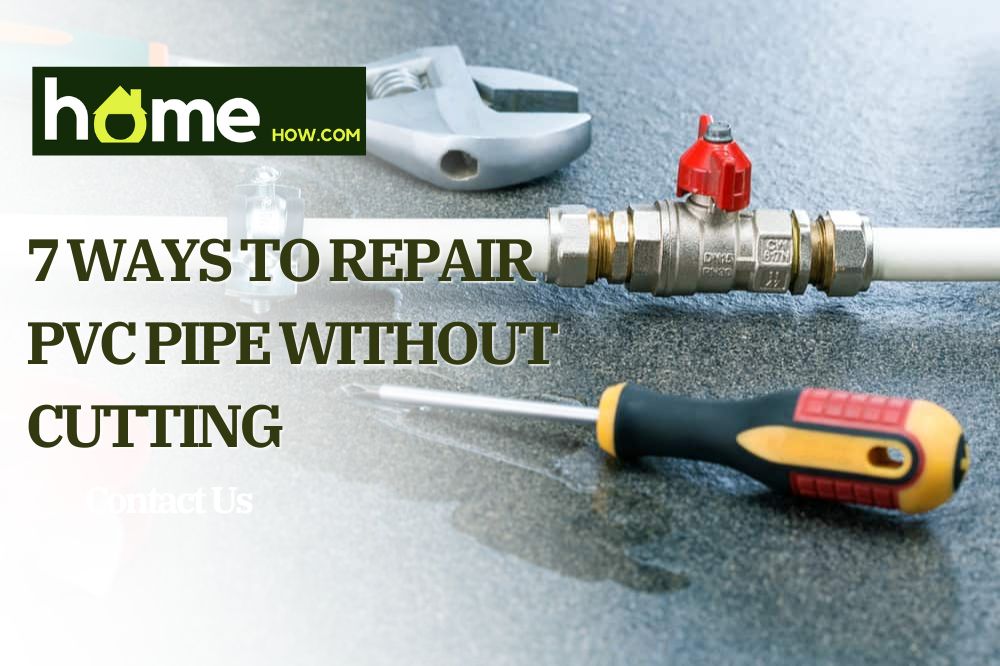There will be days when we have to do some repairs on our PVC pipes at home and sometimes, especially when pipes start to leak. The best way to repair them is by cutting and replacing them, but what to do if you don’t want to replace?
For those who do not want to do the cutting, in this article, you will learn how to do the right reconstruction of these pipes.
PVC Drain Pipes: How Durable Are They
Short term for polyvinyl chloride pipes, these construction materials are popular because of their flexibility and durability. Additionally, because of their translucence, they become suitable for different carpentry works such as plumbing, drainage, sewage, or water supply systems.
A high-quality PVC pipe may last for a hundred years, but, when exposed to extreme temperatures and other factors, these pipes tend to become slightly damaged. One great thing about them is that when they are broken, they can be repaired and not replaced. This is more convenient and repairing does not cost much.
However, understand that when the damage is already extreme, replacement is better recommended.
How to Properly Fix PVC Pipes Without Cutting
It is indeed possible to fix and repair your PVC pipes without having the need to cut them. If you want an instant repair, some of the solutions below can be followed.

1. Glass-reinforced plastic tape
If you want to repair your PVC pipes without cutting them, you might want to consider resin tapes. However, this time, you should only use the fiberglass ones.
Generally, fiberglass resins are very functional and many studies approve that they can be used as an alternative to metals and alloys. They can provide quality adhesion and cementation without trouble.
This resin is also water-proof which is why it is perfect for repairing your PVC pipes. Once they harden, they will reduce the chance of water leaks in your pipes. If you want to use this method, follow these steps:
- Clean the part of your PVC pipe which needs to be repaired first. If you are zealous enough, you can clean the nearby areas of the damaged part.
- Make sure not to dry the area because, while wet, wrap around the resin on the damaged PVC area.
- After 10 minutes, make sure this resin tape hardened.
- Open the faucet to test if it is still leaking.
If you have a resin cloth, this will also work. This resin cloth material is used like resin tape but you have to cure it by exposing the PVC pipe to UV light.
2. Superglue
Superglue is also known as repair epoxy or putty epoxy and this method is one of the most popular techniques for repairing PVC pipes without cutting them. This material is viscous and adhesive enough to be placed on the damaged area of your PVC pipes and PVC joints.
Unlike the resin tape and cloth, the PVC that should be repaired must be free of water. Thus, after you clean your PVC, you should dry it well.
Usually, when you buy epoxy products, especially those in liquid forms, there are directions for use. If you can, try to follow these manufacturer’s instructions to avoid complications. Generally, there is no curing time for this material.
After you apply it, leave it for 10-15 minutes and then open your main water supply and check for possible leaks. If there is none, you are good to go! But, if there are some leaks, all you have to do is to apply liquid epoxy to these areas as well.
Just a warning, make sure that you are not hypersensitive to epoxy. There are some studies that speak about epoxy hypersensitivity and its effects on health.
3. Silicon tapes and rubber tapes
If you are looking for a simple solution for your damaged PVC pipes, the use of silicone tapes and rubber tapes is highly recommended.
Usually, these tapes are used for minor leaks or small leaks on your PVC pipes. These tapes are very easy-to-use as all you have to do is wrap them around the damaged PVC pipe area.Take note that make sure you are wrapping them tightly.
After applying these tapes, you should check if there are any leaks. Once there is, you should remove these tapes and wrap a new set of tape again.
4. Consider hose clamps
When you use this method, you have to use rubber tape together with these hose clamps. First, you have to wrap around rubber tape onto the damaged area of the PVC pipe.
Make sure that you are wrapping tightly. Then, when you are done with the wrapping, place the hose clamps at the ends of the rubber tapes and clamp them securely.
Generally, this is just a temporary method of repairing PVC pipes. If you find a better solution, you can remove these tape and hose clamps and fill in the new repair method.
5. Silicon Patches
![]()
If you are in hardware, you might want to ask for silicon patches. These are easy-to-use repair materials for leaky PVC pipes.
These silicon patches look like those you put on your inflatable swimming pools. When you use these patches, you have to first clean the area of the damaged PVC pipe.
Then, stick the patch with pressure and you are good to go!
6. Spray sealant
Nowadays, many products are becoming popular in the home improvement industry. For PVC pipes, there are these spray sealants that are very much easy and convenient to use.
After cleaning the damaged area of the PVC pipe, all you have to do is to spray it with the sealant. After spraying, run a test and check for possible leaks. If there are still leaks left, gently spray that area until no more leak is seen.
7. Rags and towels
Well, if you want to temporarily solve your PVC pipe leaks, you might want to get some rags and towels. Generally, these two can help you control the leak while you are out getting some materials.
Reasons for PVC Pipe Leaks
Sometimes, you will also wonder what caused your PVC pipes to leak. Well, there are many reasons for these unfortunate events and some of these will be discussed in this section.
1. Improper installation

The most common cause of PVC pipe leaks is improper installation. Usually, you will find leaks in the joints of the pipes, and when you see this, it is most likely because you have installed these pipes the wrong way.
Whenever there is a gap in your PVC pipe installation, this will cause leaks in no time.
2. Too much or less cement was used
When installing PVC pipes, it is important to regulate the amount of cement you use. Too much solvent cement can cause these pipes to be damaged. Likewise, when you use less cement, they are also at risk of damage and cracks.
Bear in mind that a plumbing expert is knowledgeable of the proper amount of cement to be used. If you want to do the installation of pipes on your own, you can at least consult a plumber to give you an idea or some guide in installing these pipes.
3. Brittle pipes
Brittle pipes are caused by two factors. The first one is because of the quality of materials that were used and the second one is because these pipes are too exposed to sunlight.
If you want your PVC pipes to be less brittle, especially when they are installed outdoors, you might want to coat them with protective paint.
Aside from sunlight exposure, cold weather can also damage your PVC pipes. For this reason, it is highly recommended that you insulate your pipes.
Final Thoughts
Although PVC pipes are durable, there will be days when they become damaged. The common causes of these damages are brittleness and improper installation.
If you want to repair these pipes without cutting when they start to cause a leak, you can try using epoxy glue, fiberglass resin tape and cloth or fiberglass wrap, silicon repair tapes, rubber tapes, silicon patches, or spray sealant. Also, we suggest to call plumbers or construction experts when necessary.
If you have any better way, leave a comment below!
